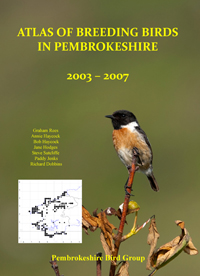There has been a clear decrease (23%) in the total number of tetrads in which Sparrowhawks were recorded between the two atlas periods. There was, however, virtually no change in the combined total of confirmed and probable breeding categories with the decrease occurring only in the possible breeding category. It is also notable that despite an overall decrease there were still 74 tetrads where Sparrowhawks were recorded during the later atlas for which there were no records during the 1984-1988 fieldwork. This makes interpretation difficult. It is possible that due to their secretive nature (especially during the incubation period in May and June) Sparrowhawks were under-recorded in both surveys.
At UK level Sparrowhawks have shown a long term increase, reaching a plateau in the early 1990’s since when they have stabilised. However, in Wales there are insufficient BBS records to obtain a reliable trend (BTO website 2009). In summary, it appears as if there may have been a decline in Pembrokeshire’s breeding Sparrowhawk population but it is difficult to be sure of its extent (if any). Perhaps targeted monitoring with better suited methods is at least worthy of consideration.
An accurate figure for the breeding population is not possible from any fieldwork carried out within the county, but assuming at least 2 pairs per tetrad in which it is recorded then a minimum of 400 pairs occur. The true figure is likely to be higher.
Paddy Jenks

Fieldwork 2003-07 (based on 490 tetrads)
Red = breeding confirmed = 23
Orange = breeding probable = 48
Yellow = breeding possible = 125
Total tetrads in which registered = 196 (40%)
 Friday, August 30, 2013 at 9:01AM
Friday, August 30, 2013 at 9:01AM  1949 BoP in
1949 BoP in  Sparrowhawk
Sparrowhawk 





